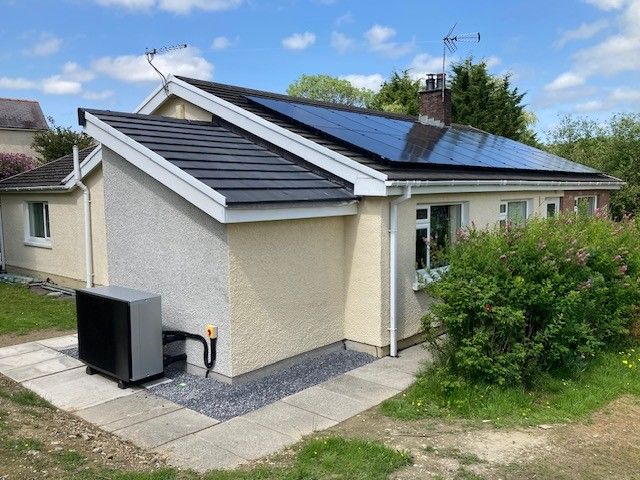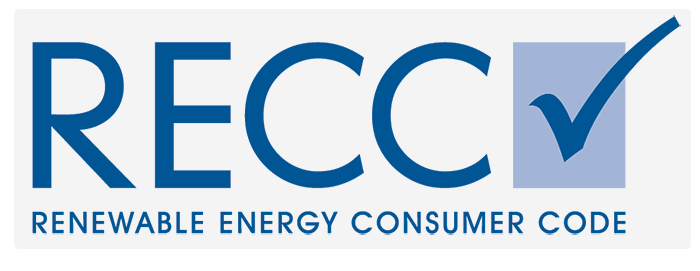Integrated Heat Pump, Solar & Battery Systems: 2025 Homeowner Guide
What is an integrated renewable system? It's a home energy setup that combines solar panels, an air source heat pump, and battery storage to maximise efficiency and minimise energy bills.

Thinking about installing a heat pump, solar PV panels, or a home battery? In this comprehensive guide, we'll explore how these technologies work together, what to consider before installation, and how to maximize their benefits—whether you want to save money, reduce carbon emissions, or decrease reliance on the grid.
At Solar Save Renewables, we've helped homeowners across Carmarthenshire and Wales design integrated systems that make the most of renewable energy. Here's everything you need to know about combining these technologies in 2025.
What's the Best Order to Install: Heat Pump, Solar, or Battery?
One of the most common questions we hear is: "Which should I install first?"
Technically, these systems work independently—but combining them can significantly boost your home's efficiency. Your decision may depend on:
- Urgency – If your boiler is old, a heat pump might be the priority
- Roof suitability – If you have good roof space, solar panels could be the best starting point
- Budget – You can install components in stages—we'll help design a future-proof system
Our Recommendation
If possible, start with solar PV and battery storage. This allows you to:
✔ Collect energy usage data to size your future heat pump accurately
✔ Benefit from a quicker installation compared to a heat pump retrofit
Pro Tip: If you plan to add a heat pump later, ensure your installer uses a hybrid-ready inverter for seamless integration.
Can Solar Panels Cover My Heat Pump's Energy Demand?
Heat Pumps & Winter Energy Use
Heat pumps are most efficient but also most demanding in cold weather. In Wales, this means:
- A typical 3-bed home may need 20–40 kWh/day in winter
- A larger, poorly insulated home could require 60+ kWh/day on freezing days
Meanwhile, solar panels generate most energy between March and September—when heating demand is lowest.
"In February, our solar generates about 8 kWh on a good day. But our heat pump needs 35 kWh—we rely on the battery and off-peak top-ups."
— Customer in Llandovery
The Solution: Oversizing + Battery Storage
To maximize renewable energy for your heat pump:
✔ Install as many solar panels as possible (typically 10–16 panels, 4–6.5 kWp)
✔ Add a battery (we recommend 8–15 kWh, depending on home size)
A battery helps:
- Store excess solar power for nighttime use
- Bridge the gap between peak solar generation and heating demand
A Day in the Life of an Integrated System
| Time | Action |
|---|---|
| 5–8 AM | Battery powers heat pump before sunrise |
| 8 AM–4 PM | Solar runs appliances & charges battery |
| 4–10 PM | Battery powers heating, lights, and cooking |
| Overnight | Optional off-peak top-up (on smart tariff) |
With smart controls, your home automatically prioritizes the cheapest, greenest energy available.
What Size System Do I Need?
Heat Pump
Most homes require:
- 5–12 kW Air Source Heat Pump (ASHP)
- Sized based on floor area, insulation, and heating type
- Installed with a 200–300L hot water cylinder
We recommend Daikin Altherma heat pumps—efficient, quiet, and smart-tariff ready.
Solar PV
- 4–6.5 kWp (12–16 panels) depending on roof size
- South-facing or East/West split preferred
- Smart inverter for battery/EV integration
Battery Storage
- 5–15 kWh recommended (expandable later)
Installation Checklist: Is My Home Suitable?
Before installation, we assess:
✔ Roof angle & shading – For optimal solar generation
✔ Electrical setup – Can your consumer unit handle the load?
✔ Heating emitters – Do radiators/underfloor need upgrades?
✔ Space for heat pump – ~1m² outside, near the hot water cylinder
✔ Indoor space – For battery, controller and cylinder
Costs & Savings in 2025
With the Boiler Upgrade Scheme (BUS) and 0% VAT, 2025 is a great time to switch.
| System Type | After Grants | Typical Annual Savings |
|---|---|---|
| ASHP Only | £4,000–£6,000 | £300–£500 |
| Solar + Battery | £5,000–£9,000 | £500–£800 |
| Full System | £10,000–£15,000 | £1,000–£1,800 |
Grants depend on EPC standards—our MCS-accredited team will guide you.
Do I Need a Smart Tariff?
Not essential—but highly beneficial. With tariffs like Octopus Agile or EDF Heatpump+, you can:
✔ Charge your battery off-peak and use it at peak times
✔ Schedule your heat pump for low-cost hours
✔ Earn money via the Smart Export Guarantee (SEG)
We'll help configure your system for optimal savings.
How to Control Everything
Each component of your integrated system comes with its own app, but we integrate them for seamless, centralised control:
- MyDaikin — Manage heat pump temperature settings and scheduling effortlessly
- FoxESS, SolarEdge, Solax, and other battery systems — Monitor solar generation and battery storage performance in real time
- Smart home add-ons — Control electric vehicle chargers, hot water diverters, and other smart devices
Our goal is to provide you with a hassle-free, fully automated energy system tailored to your lifestyle and needs.
Final Thoughts: Is It Worth It?
Yes—if you want to:
- ✔ Lower your long-term energy bills by generating and storing your own renewable power
- ✔ Cut carbon emissions by up to 80%, making a real impact on your environmental footprint
- ✔ Increase your home's energy independence and reduce reliance on the grid
- ✔ Benefit from government grants and incentives available in 2025
- ✔ Enhance your property’s value with a modern, energy-efficient system
- ✔ Enjoy greater control and comfort through smart, automated energy management
Investing in an integrated heat pump, solar, and battery system is not just about saving money—it's about future-proofing your home and contributing to a cleaner, greener Wales.
Ready to Get Started?
Book a Free Home Survey
Our Carmarthenshire-based engineers will assess your home and provide a personalized system design.
Speak to Our Team
Call us at 01558328437 or visit our contact page.
Solar Save Renewables – Trusted installers of solar PV, batteries and heat pumps across West Wales.

 PV Solar Panels & Battery Storage
PV Solar Panels & Battery Storage Air Source Heat Pumps
Air Source Heat Pumps Solar Thermal
Solar Thermal Electric Vehicle Charging
Electric Vehicle Charging Bespoke Off-grid Heating & Electric Solutions
Bespoke Off-grid Heating & Electric Solutions






